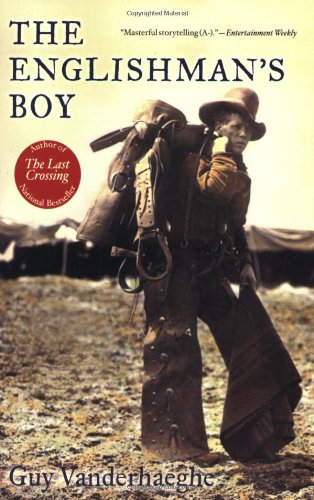The Englishman’s Boy
Two story lines present the title character, caught up in a massacre in 1870s Saskatchewan, and the machinations of 1920s Hollywood. A film mogul, Chance, has heard rumors that a particular stunt man has an extraordinary life story that’s ripe for exploitation in Chance’s plans to produce a Western on the grand scale. Chance hires a silent film title writer, Harry Vincent, to try to find Shorty McAdoo and record his memoirs. But Shorty has no desire to relive the past, namely his involvement in a conflict between a group of wolfers arriving at a Saskatchewan trading post demanding whiskey, and a band of Assiniboine camped near the post, accused of stealing horses. Harry must resort to bargains and fast talking to finally worm the story out of Shorty.
Chance then plunges into production. While he insists on historical accuracy in the film’s visuals, no matter what the cost, truth has no place in his ambition to twist the facts of the story to suit his own ends: critical acclaim a la D.W. Griffith, and an absurd political, but in his mind patriotic, agenda.
Vanderhaeghe won the Canadian Governor General’s Award for fiction when the book was originally published in 1996. It contains some memorable prose images: “the short curly grass writhed and shuddered under the invisible lash of the shrilling wind. The Englishman’s boy rode leaning into it, like a man shouldering through swinging doors…” Both story lines portray life on different frontiers—the harsh North American West, and the beginnings of the Hollywood film industry, a place no less ruthless. I was fascinated by both. An historical footnote: the Cypress Hills massacre, fictionalized here, led directly to the formation of the North-West Mounted Police, forerunner of the RCMP.










